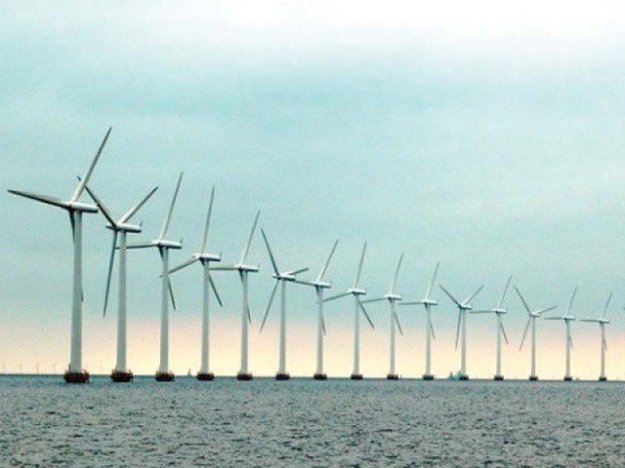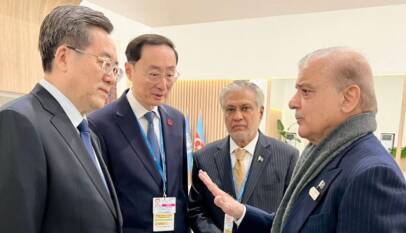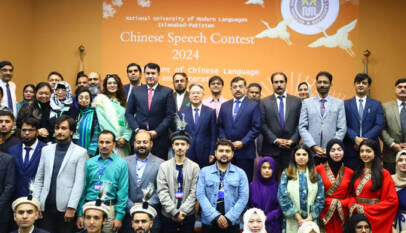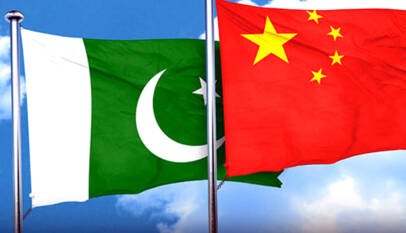Jhimpir Wind Farm creating jobs for locals, engineering economic growth: GM Sun
While talking about the Three Gorges Second Wind Power Project, located at Jhimpir, Thatta in Sindh, General Manager of Three Gorges Wind Farm Pakistan Limited, Sun Qiang said that more than 80% of the company’s employees are Pakistanis, and the project has created numerous job opportunities for the locals. He also expressed hope that the company will help Pakistan mitigate its energy shortages with cleaner energy solutions. He labelled similar projects as a testimony of Pakistan-China friendship, and said these will engineer economic growth.
Wind power project under CPEC is another symbol of Pak-China friendship, reports China Economic Net (CEN).
“Through the construction of projects under CPEC, I hope we can bring Chinese experience, equipment, and standards to Pakistan, making our contribution to Pakistan’s economic growth and contributing to the lasting Pak-China friendship,” said Sun Qiang, general manager of Three Gorges Wind Farm Pakistan Limited.
Three Gorges Second Wind Power Project, located at Jhimpir, Thatta, Sindh, was listed as an actively promoted project in CPEC in August 2014. Building a large-scale wind power plant in a foreign country is by no means easy. When the construction of the Three Gorges First Wind Power Project started, there’s no equipment to meet the requirements, no reliable suppliers of infrastructure materials, and even no experienced local labor force in the Pakistani market.
In this case, they had to transport a large number of materials, advanced equipment and tools from China. “Later we talked with local suppliers step by step, to help them enhance productivity, raise the standard, and produce the building materials that can meet our requirements,” Sun said, adding that “meanwhile, we Chinese experts also trained a group of capable local workers for the project.”
By the time of constructing the second wind power project, with a relatively mature market established, China-Pakistan energy cooperation in all aspects has been continuously upgraded, further promoting the sound development of the local power market.
Sun said that now the total installation capacity is 150,000 kilowatts, with an annual electricity output of 430 million kilowatts, which can meet the needs of 1.5 million local households for about a year. “The project created around 800 jobs at the peak of construction. During the operational period, it still provided approximately 150 jobs, including around 40 technical positions like engineers and about 110 service positions for day-to-day operations,” Sun added.
As Pakistan and China are different in culture and habits, it’s somewhat inconvenient for Chinese staff to work in Pakistan. However, the friendliness of Pakistani employees makes them get along very well. In addition to the weekly Urdu and Chinese language courses offered by the company, Chinese and Pakistani employees would get together and hold some celebration activities on local holidays. “The most exciting moment is that when we hear our national anthem at the construction site on our National Day. You can imagine how moved I was at that minute on a foreign soil!” Sun said.
According to Sun, now more than 80% of employees in their company are Pakistanis, with core departments headed by Pakistani staff. Besides, many of these Pakistan employees have once studied in China, and they are very supportive of the “Belt and Road”Initiative, especially CPEC.
As this year marks the 70th anniversary of the establishment of diplomatic ties between China and Pakistan, Sun Qiang said his expectation. “By building wind power project in Pakistan, we hope to help mitigate the power supply problem and contribute to the development of clean energy in Pakistan!”
SUPARCO announces lunar mission partnership with China
ISLAMABAD: Pakistan Space and Upper Atmosphere Research Commission (SUPARCO) has announced…












